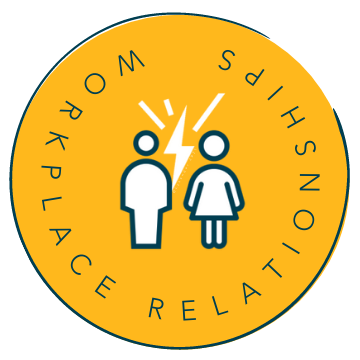
“Over 5,000 workers across different industries, business sizes and work roles surveyed, found that 1 in 5 people were experiencing a mental health condition.
64% believed their productivity would increase within a mentally healthy workplace.”
We know that leadership sets the tone for a psychologically safe workplace: certain leadership styles promote wellness and mental health and others don't. It is probable in any business that some leaders will be aware and actively undertaking positive work in this space and others will not see it as either important, a real issue to address or perhaps something that is important but awkward and difficult to address. Unless there is consistency of focus and priority given to shifting the tone, no real change is possible.
If mental health and wellness has been identified as an issue within an organisation, the critical success factor for change is that senior leaders and stakeholders understand that there is important work to do and get on board in terms of engaging with and driving this work. And that they have the commitment and capabilities to engage subsequent layers of leaders to do the same.
“One of the six key characteristics of an effective integrated approach is Leadership commitment: when leadership makes worker safety, mental health, and well-being a clear priority for the entire organisation. Leaders drive accountability and provide the necessary resources and environment to create positive working conditions.”

The Harvard Business School paper, Implementing an Integrated Approach - Weaving Worker Health, Safety, and Well-being into the Fabric of Your Organisation, reinforces the idea that middle managers and supervisors have significant influence on the safety and health practices of their employees.
They help create a safe worksite and can affect employee stress levels, schedules, and expectations around taking breaks, vacation, and sick time.
They often hold the keys to successful implementation of the initiative because they directly manage both workflow and employees.
Supervisors play an important role in modelling and supporting health, safety and wellbeing practices. Appropriate development is important to leave them well equipped to support employees in their efforts to access what they need to experience wellbeing within their teams.
They may also need to understand that this supportive role is an essential part of their job.
Middle level leadership buy-in and commitment is also critical and so it's important to contemplate the different pressures these managers face. On the one hand, they need to make sure the primary work gets done. On the other hand, they have to manage their employees and create working conditions that help them succeed.
Senior leaders being realistic about resourcing levels and commitments made for delivery of outcomes is also a critical part of equipping mid level leaders for success.
Ultimately, your organisation’s culture informs the best ways to get mid-level leadership buy-in and participation in an integrated approach. Regular messages and shows of support from top leadership can play a significant role in bringing mid-level leadership on board, as can educating them on how an integrated approach can help them (1).
$2.30
the average return for every dollar invested into creating a mentally healthy workplace
- Pricewaterhouse Coopers Australia, 2014, ‘Creating a Mentally Healthy Workplace’
A mental health and wellbeing strategy helps organisations to proactively invest, monitor and improve mental health and wellbeing.
When supported by stakeholders and senior leaders, these initiatives are more likely to succeed, as they are more sustainable and the rest of the organisation takes them more seriously, therefore ensuring sufficient focus on the initiative.
In the case of Constructive and Committed Leadership, one size does not fit all. You will find that
a strategy that is tailored to your organisation's needs, goals and risks, which addresses your specific workplace needs will yield the best results.
Call To Action
Leaders with the responsibility to drive organisational wellness may want to present a business case or rationale to key stakeholders and decision makers.
A business case for creating a mentally healthy workplace is very similar to a traditional business case. It should make the decision to support your initiatives, both personally and commercially, an easy one and address core objections, for example: Financial; Image; Legal; and Moral.
Your business case should demonstrate the value that focusing on workplace mental health will bring to your organisation, as well as the costs of doing nothing.
Clean, clear and consistent messages, supported by evidence, and promoted by your constructive and committed leaders are more likely to be successful in achieving the desired outcomes.
The WorkWell Toolkit Strategy page is a great guide on developing a mental health and wellbeing business case and includes facts and statistics to make sure it is well-rounded and compelling.
Where to Now?
Sources
Harvard Business School paper, Implementing an Integrated Approach - Weaving Worker Health, Safety, and Well-being into the Fabric of Your Organization, 2017, https://centerforworkhealth.sph.harvard.edu/sites/default/files/10.12.17_Guidelines_Screen_post.pdf





